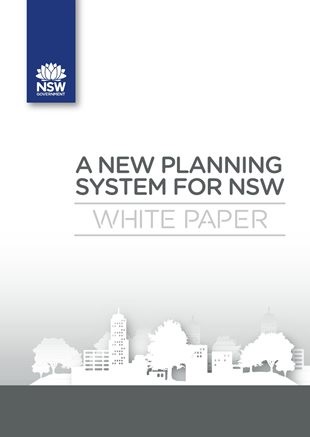The NSW Government has released a planning White Paper which architects say may usher in major changes in how design and development will operate in the state.
The new planning system proposed has drawn support from The Australian Institute of Architects.
The government says the new system will ‘make NSW more competitive by improving decision making, providing more certainty and making it more cost effective to do business in the state. It will focus on people and communities, rather than processes. Communities will have a say in shaping their local area by helping to develop the long-term strategic plans that will set the ground rules for development’.
NSW Chapter President Joe Agius said the changes outlined in the White Paper were in line with the focus on strategic planning the Institute has been advocating for some years.
“The Government has recognised that a fundamental shift in planning culture is required, not just a change in the planning legislation or the planning system, “Agius said.

“The new system will also be a major change in how design and development will operate in New South Wales,” he said.
Agius said the shift in focus from development assessment to strategic planning would require skilled people who could apply design thinking at the strategic scale of the city and the sub-region.
“The Australian Institute of Architects and the Planning Institute of Australia are keen to work together to produce a generation of architects and planners with these skills,” he said.
“A proposal to conduct a training needs analysis to define and develop these skills is being discussed with the state’s universities.
“Overall, the Institute welcomes the introduction of a more streamlined system for approving projects which comply with development controls and standards
“The White Paper emphasises the importance of deciding these controls and standards with close community involvement through a strategic design and planning process.
“We need to encourage community input at the front end of the development process – the plan making – and away from the back end – the project approvals – where currently so much time and effort are focused and where much conflict occurs,” Agius said.
“Our communities will all benefit from clearer expectations for development.
“This will lead to fewer objections when design proposals match these expectations,” he said.
Agius said he was pleased the Minister for Planning, Brad Hazzard, and his Department recognised that funding, resources and time would be needed to successfully make the transition from the present planning system to the new one.
“These transitional arrangements will be critical to the success of the new scheme,” he said.
“The Institute looks forward to working with the Government to refine these and other implementation issues.
“In doing so, I acknowledge the productive association between my predecessor, Matthew Pullinger, and the Minister during the process of developing the White Paper, and trust that this will continue during the term of my Presidency.”
The HIA particularly welcomes the focus on a cultural change within state and local government in achieving planning outcomes.
“This aspect of the White Paper is major step in the right direction and should be applauded” said David Bare, HIA NSW Executive Director.
As an initial response, HIA is supportive of a number of key initiatives outlined in the paper.
Some of these include:
-
Focusing on upfront Planning strategies to facilitate growth;
-
A fresh approach to a culture of delivery that accelerates positive planning outcomes;
-
Community engagement in the early stages of the strategic planning phase;
-
Streamline approvals for complying development proposals; and
-
Aligning development and infrastructure.Individuals can submissions and join the discussion via the NSW Planning website.
Image: NSW Planning

